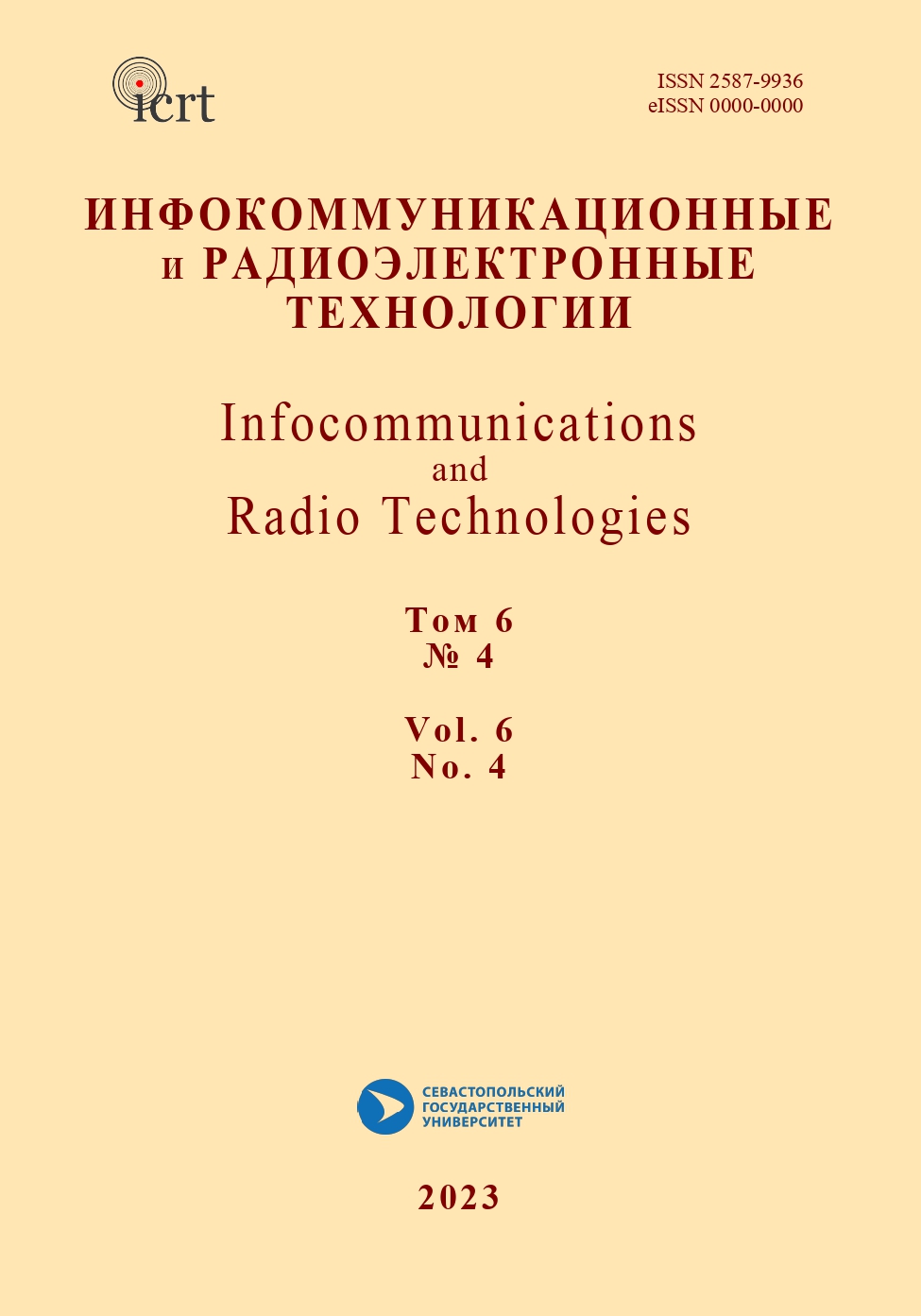Moscow Institute of Physics and Technology (National Research University)
Moscow, Moscow, Russian Federation
UDC 621.391
UDC 621.396
UDC 519.21
UDC 530.182
The problem of modeling an energy receiver of ultra-wideband chaotic radio pulses for chaotic radio communications is studied. As is shown, a combination of numerical and analytical modeling completes the problem of calculating characteristics of ultra-wideband chaotic communication systems. On the one hand, the numerical method is effective for calculating receiving systems with short radio pulses, and with an increase in the duration of radio pulses Tp the rate of the method decreases proportionally, whereas technical requirements for the computing equipment increase proportionally, so the operation time increases faster than Tp. On the other hand, the accuracy of the analytical solution, which is insufficient in the case of short radio pulses, grows proportion-ally with an increase in the duration of the radio pulses. Thus, in this problem, the numerical and analytical methods ideally complement each other. It is shown that the accuracy of the approximate analytical solution for the optimal threshold and the error probability becomes sufficient for engineering calculations at the values of the number of freedom degrees (processing gain) of chaotic radio pulses B 200. The combination of numerical and analytical modeling methods can significantly simplify tiresome modelling of chaotic communication systems, for example, those that provide maximum range by increasing the signal length.
ultra-wideband communications, energy detector, chaotic radio pulse, direct chaotic communications, envelope detector, logarithmic detector
1. A. S. Dmitriev, “Dynamic chaos as a carrier of information,” In : New in synergetics : A look into the third millennium, Moscow : Nauka, 2002, pp. 82-122. (In Russ.).
2. A. S. Dmitriev, B. Ye. Kyarginsky, A. I. Panas, and S. O. Starkov, “Experiments on Direct Chaotic Communications in Microwave Band,” International Journal of Bifurcation and Chaos, vol. 13, no. 06, pp. 1495-1507, Jun. 2003, doi:https://doi.org/10.1142/s0218127403007345. EDN: https://elibrary.ru/LICCJH
3. Yu. V. Andreyev, “Reception of ultra-wideband chaotic radio pulses with a large base,” Microwave and telecommunication technology, no. 3, pp. 81-82, 2021. (In Russ.). EDN: https://elibrary.ru/IGSLBF
4. Yu. V. Andreyev, “Analytical Model of an Energy Detector for Ultra-Wideband Chaotic Communications,” Electronics, vol. 12, no 4, p. 954, 2023, doi:https://doi.org/10.3390/electronics12040954.
5. D. C. Montgomery and G. C. Runger, Applied Statistics and Probability for Engineers, 6th ed., Wiley, 2014.










